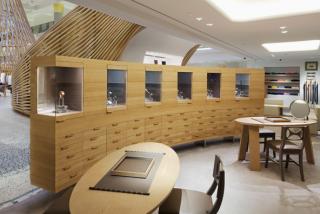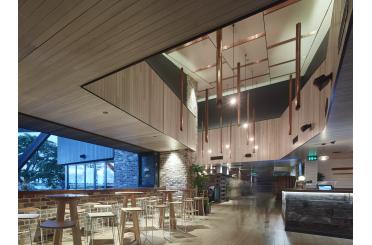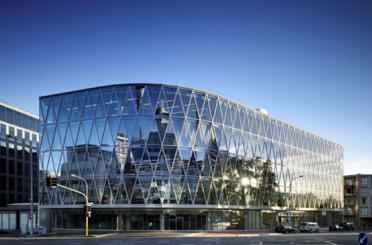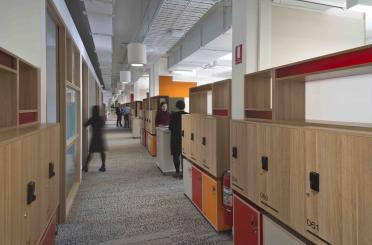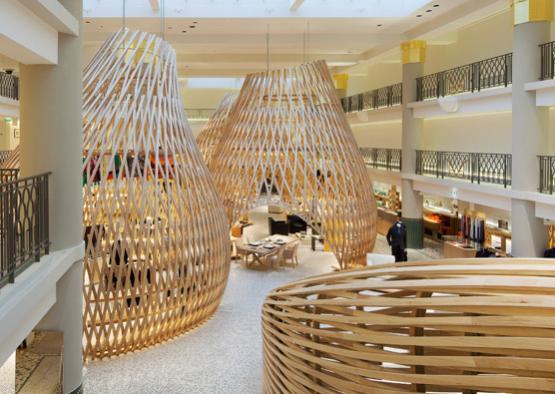
Overview
When Hermes opened its 334th luxury fashion store – on the Left Bank in Paris – in 2011, it showcased a new direction for the famous brand, and used timber to do it.
The Paris store on Rue de Sevre is located at the foot of an elegantly restyled 1930s apartment building – where its swimming pool once was.
Listed as a historic monument since 2005, the Lutétia swimming pool – built in the heart of the Saint-Germaindes-Pré quarter of the city in 1935 – has a strong architectural character in the spirit of its art deco age. After its closure, the pool had a variety of diverse uses before this latest and most dramatic transformation.
The RDAI agency says the project had a double aim: to respect, conserve and reinterpret the architecture of the swimming pool, and to tell a contemporary story.
The only major modification was covering of the pool with a composite concrete floor slab, supported by a light structure. Underneath, the pool has been integrally preserved. The facade on to the rue de Sèvres has kept its original appearance.
Story and pictures by special arrangement with timber+DESIGN International magazine.
Structure
‘Huts’, as the architect describes them, is probably not adequate recognition for the majestic ash pavilions that occupy the volume of the old pool area. The pear-shaped droplets are more akin to the nests of a weaver bird.
They are self-supporting structures resting on a system of woven wooden laths (profile 6 x 4 cm) with a double radius of curves. A special program was written to create the documentation and complex 3D drawings for each.
The huts house the Hermes collections and rise more than 9 m – leaning progressively, as if attracted by the skylights. They seem to have simply alighted on the ground, lending the project its nomadic dimension.
The fourth hut, which appears to be lying down, lines the staircase that naturally leads the visitor towards the pool and forms the link between the entrance and the open space of the swimming pool.
Interior
To tell the contemporary part of the story, Hermes’ designers created three monumental ash ‘huts’, which disrupt and converse with the existing volumes.
“The huts are flexible, light and nomadic – implying the creation of houses within the house; the change of scale and the invitation to wander, and to drift produce a powerful magic,” RDAI say.
Movement created by the timber elements is natural and flowing, and the shimmering of the water that once filled the space is evoked in a subtle way in the tones of the mosaics and by the lighting effects.
One writer has noted an “imperceptible contraction, rather like the sides of the Médicis fountain in the Luxembourg garden”, guiding the visitor from the main entrance to the swimming pool and its strange inhabitants, the huts.
“The ceiling is lightly inclined, the walls curved and leaning inwards and covered with oak laths that leave recesses open as if floating in matter.”
The entire space is bathed in natural light from three large skylights above the atrium, softened only by a metal screen. At night the skylights are lit to avoid a ‘black hole’ effect. The huts are lit from the inside and appear as giant lanterns, with the vaults and latticed wood picked out by floor lighting. Each has a large chandelier composed of a double-ring of suspended wood.
